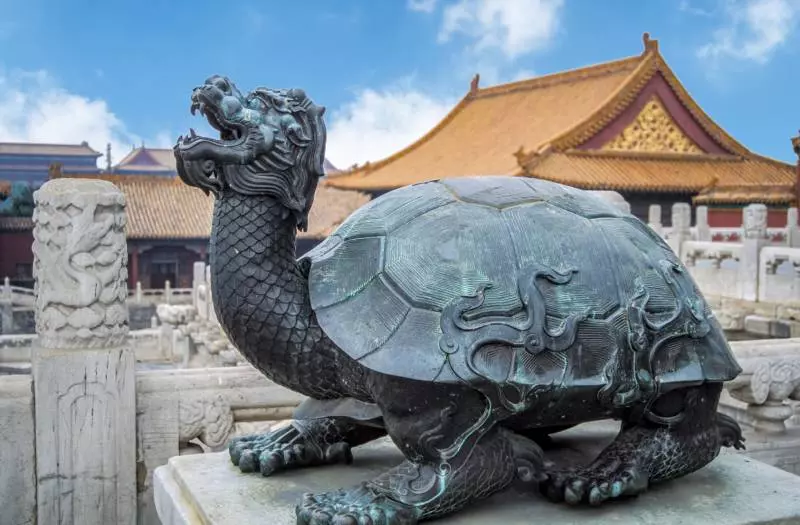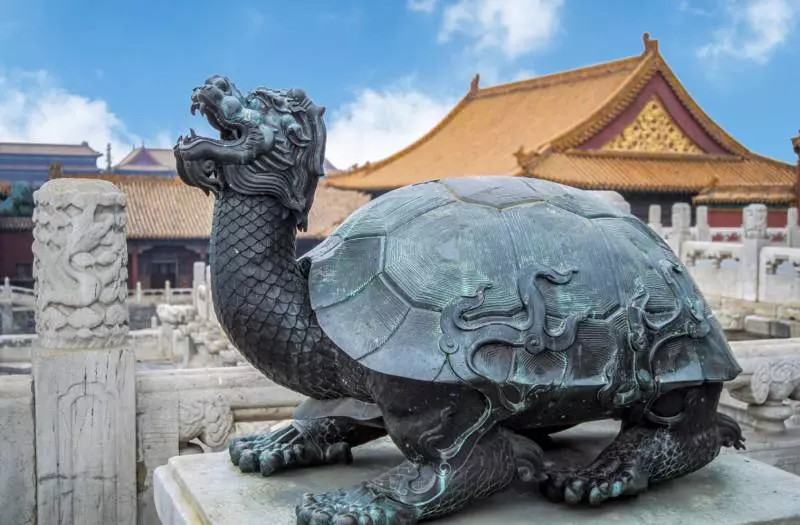It's time to dive into the mysterious world of the turtle and explore its profound cultural significance in Chinese history and the art of feng shui.
 Image Credit: Unknown, Saigonintela.vn
Image Credit: Unknown, Saigonintela.vn
The allure of turtles is undeniable. These fascinating creatures have captivated cultures worldwide with their unique characteristics, such as their enduring shells, long lifespan, and gentle nature. The Chinese, in particular, hold turtles in high esteem, revering them for their longevity and symbolic associations with life.
Turtles have assumed various forms and roles in different cultures. In Vietnam, they are regarded as resilient warriors wielding enchanted swords. For the Japanese, they represent one of the seven gods of happiness, embodying both wisdom and mischief. However, the question remains: how has the perception of turtles evolved over the centuries?
 Image Credit: Unknown, Saigonintela.vn
Image Credit: Unknown, Saigonintela.vn
A Glimpse into History: The Turtle's Significance
References to turtles in Chinese culture date back to the Shangdi deity and the Zhou Dynasty that reigned from 1046 to 256 BC. During the Zhou Dynasty, the turtle held a prominent position in the first dynasty: the Zhang. China was already highly advanced at that time, with early developments in writing systems and a calendar.
Given its small stature and remarkably long lifespan, the turtle held an air of mystique, instantly captivating the imagination of the ancient Chinese. It swiftly attained spiritual significance, symbolizing unwavering steadfastness and finding its place in divination practices. It comes as no surprise that countless artistic representations of turtles from this period have survived.
Over time, the turtle evolved into one of the "Four Fabulous Animals," each representing a cardinal direction. The black turtle of the north and winter symbolized endurance and longevity. The azure dragon represented the east and spring, while the red bird of the south signified summer. Lastly, the white tiger of the west represented autumn.
This connection between the spiritual and natural realms emphasizes the reverence the Chinese people held for these animals. It highlights a profound understanding of the interplay between the spiritual and natural domains, a concept seldom explored in similar contexts.
 Image Credit: Andreas Altenburger, Shutterstock
Image Credit: Andreas Altenburger, Shutterstock
Yin and Yang: A Delicate Balance
No discussion of Chinese culture is complete without mentioning Yin and Yang. Just as every Yin has its Yang, every passive and feminine force finds its active and masculine counterpart. The turtle's upper shell, or carapace, represents the Yin element. It features prominently in the creation story of Pangu, the figure who separated darkness from light.
Throughout this journey of Yin and Yang, the turtle or tortoise accompanies Pangu, assuming an elevated role in Chinese culture. The turtle's significance is further enriched by its association with other dual roles, such as Heaven and Earth. It even plays a part in repairing the sky after a deluge, contributing to the origin of chaos. Clearly, the turtle stands as a pillar of Chinese culture.
The Turtle's Modern Twist: Feng Shui
The turtle's role takes on a modern twist with the practice of feng shui. In this ancient art, the four cardinal directions play a crucial role, with the turtle representing the north. While we may perceive feng shui as a modern phenomenon, its roots trace back to ancient times. Its essence lies in achieving balance and harmony, with the cardinal directions and their symbolism serving as a roadmap.
Feng shui draws upon a mix of real and mythical creatures, embodying the Yin and Yang concept. Its aim is to optimize the flow of chi, the life force composed of these elements, in both our homes and our lives at large. The black turtle of the north assumes a prominent position in this practice, which also incorporates the five elements: metal, earth, fire, wood, and water.
At its core, feng shui unifies the Yin and Yang forces of heaven and earth. The turtle represents the Yin element, as it exists near the earth and exudes a passive nature. Its slow pace parallels the calmness associated with water, where many turtle species make their homes. With its distinctive two-parted shell, consisting of an upper carapace and lower plastron, the turtle stands out as a symbol of balance.
 Image Credit: Mehdi Naeimi, Shutterstock
Image Credit: Mehdi Naeimi, Shutterstock
Final Thoughts: A Tapestry of Symbolism
The turtle offers countless analogies that illuminate the Yin and Yang dynamics within Chinese culture. Its unique characteristics reflect the complexity of this symbolism. It is truly fascinating that the significance attached to turtles has endured over time, encouraging thoughtful contemplation of seemingly opposing elements. Ultimately, the truth lies in the profound connection between them.
You Might Also Be Interested In:
- Turtle Facts
- Why Do Turtles Have Shells?
Featured Image Credit: UlyssePixel, Shutterstock

















![7 Best Sites for Advertising Rental Property Listings [Free + Paid]](https://saigonintela.vn/uploads/images/blog/admin/2024/02/15/7-best-sites-for-advertising-rental-property-listings-free-paid-thumb-1707966641.webp)